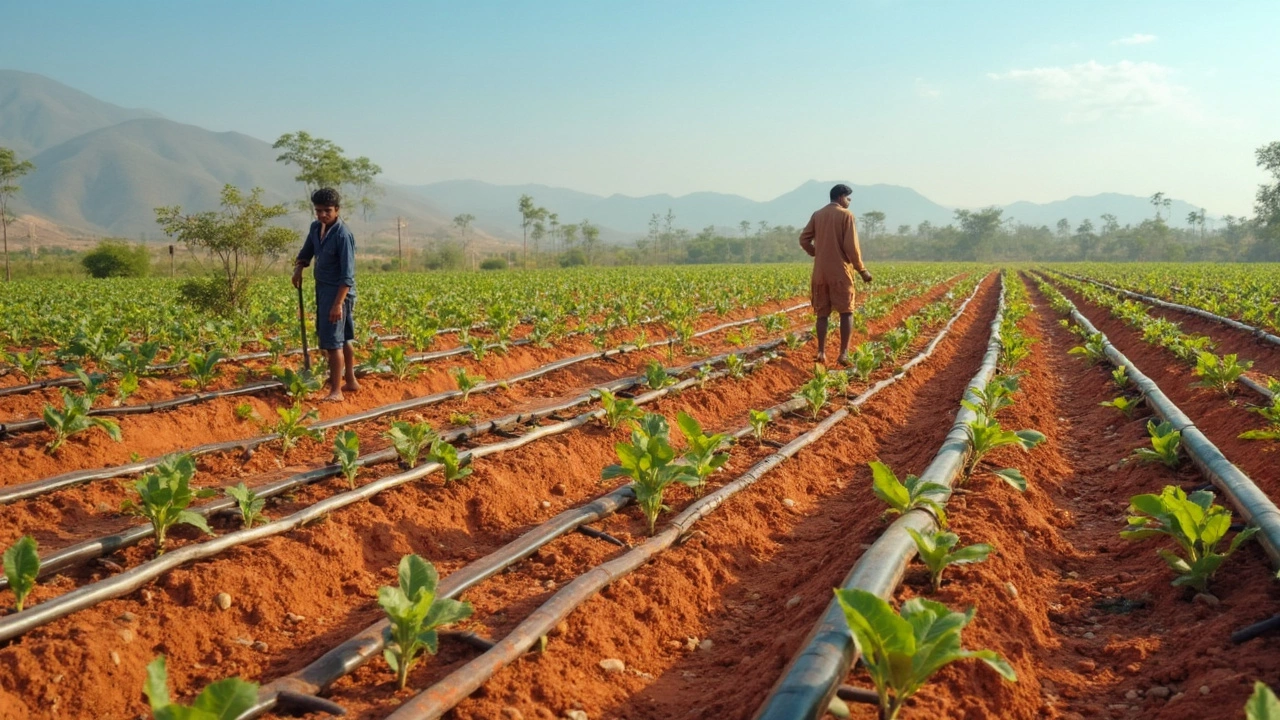Farming Challenges – Simple Ways to Overcome Them
Every farmer in India knows that growing food isn’t just planting seeds and waiting. From unpredictable rain to rising input costs, the hurdles are real. The good news? Most of these problems have cheap, practical fixes you can start using tomorrow.
Water Management Issues
Water scarcity tops the list of farming challenges. A lot of growers still use flood irrigation, which wastes up to 70% of the water. Switching to drip irrigation can cut that waste dramatically, but many avoid it because they think it’s too pricey or hard to set up.
Here’s a quick starter: bury drip lines just 10‑15 cm deep in loamy soil. That depth protects the tubing from sun damage and keeps the water close to the root zone. If you’re on a tight budget, use simple PVC pipes as a makeshift drip tape – it’s cheap and works well for small plots.
Don’t forget timing. Watering in the early morning reduces evaporation and gives plants time to dry before night, which lowers disease risk.
Soil & Crop Health Hurdles
Heavy, compacted soil is another common nightmare. When the ground feels like a brick, roots can’t breathe and crops suffer. Add a handful of coarse sand or a layer of compost to break up the density. This simple amendment improves drainage and lets roots spread more easily.
Companion planting – also called “sister plants” – can boost yields while keeping pests away. Pair beans with corn, or grow marigolds alongside tomatoes to repel nematodes. The trick is to choose crops that don’t compete for the same nutrients.
Speaking of pests, many farmers still rely on chemicals that harm the soil and the environment. Natural pest control options like neem oil, garlic spray, or releasing beneficial insects can keep the damage low without hurting your soil life.
One surprising pest‑trigger is coffee grounds. While they’re great for compost, a few plants (like blueberries and azaleas) actually dislike the acidity. Check your garden list before tossing grounds directly onto beds.
Market volatility adds a financial layer to farming challenges. Rice and wheat prices can swing wildly due to global demand and weather events. To protect yourself, diversify your crops – grow a mix of cereals, vegetables like broccoli, and cash crops like medicinal herbs. This spreads risk and gives you more options when one market dips.
Broccoli farming, for example, has become profitable in many Indian states when growers focus on low‑cost seed varieties and direct‑to‑consumer sales. Use local market data to set realistic price targets and keep an eye on input costs.
If you’re worried about the cost of drip systems, remember that the initial expense pays off within a season through water savings and higher yields. Look for government subsidies or farmer co‑ops that offer bulk discounts on tubing and emitters.
Finally, keep a simple record of what works and what doesn’t. A notebook or a basic spreadsheet can track rainfall, irrigation timing, pest incidents, and market prices. Over time, those notes become a powerful tool for making smarter decisions.
Farming challenges may feel overwhelming, but breaking them down into bite‑size actions makes them manageable. Start with one change – like adjusting irrigation depth or loosening heavy soil – and watch the improvement ripple through your entire farm.
Ready to tackle the next hurdle? Keep experimenting, stay curious, and remember that every small tweak brings you closer to a resilient, profitable farm.
Drip Irrigation Drawbacks: What You Need to Know
Drip irrigation is often praised for its water efficiency, but it's not without its downsides. This article explores the practical disadvantages of drip irrigation, including initial costs, maintenance requirements, and potential for system blockages. Understanding these challenges allows farmers and gardeners to make informed decisions about whether this system suits their needs. We'll delve into the complexities involved and provide tips to mitigate some common issues.
About
Drip Irrigation
Latest Posts


Easy Ways to Loosen Compacted Soil Without Tilling
By Alden Thorne Jan 17, 2025

Do Bleeding Hearts Like Sun or Shade? The Right Light for Kitchen Garden Success
By Alden Thorne Nov 20, 2025

Best Fruit and Veg to Grow on a Balcony: Easy Choices for Fresh Harvests
By Alden Thorne May 1, 2025

